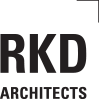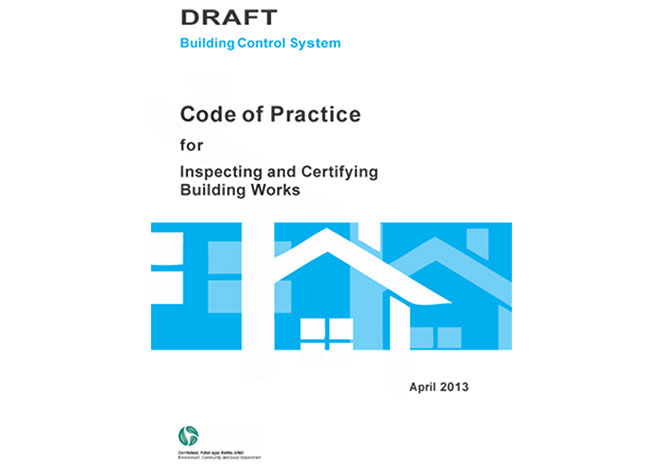BACKGROUND
The Building Control Amendment Regulations 2013 are due to come into law from the 1st March 2014.
Recent well publicised cases in connection with pyrites and Priory Hall have highlighted the need for significant improvements to the building control regime in Ireland.
Current legislation governing building control in Ireland dates back to the Building Control Act, 1990. This applies to new buildings, extensions, material alterations and changes of use of buildings in commercial and residential property. The Building Control (Amendment) Regulations 2013 (the “Regulations”) are to be read in conjunction with existing Building Control legislation. The main documents covering the new regime are SI No 80 of 2013 – Building Control (Amendment) Regulations 2013 and the new Code of Practice for Inspecting and Certifying Building Works.
This important new legislation will have a very significant effect on the way building design and construction is managed and implemented. It will allow competent professionals greater control of inspection and provide a chain of responsibility throughout the design and construction process.
The new legislation will be important in moving to of an improved culture of compliance in relation to building control. There will be a direct impact on professionals, including engineers, architects and building surveyors as well as relevant members of the professional design team, together with owners, builders and building control authorities.
NEW REQUIREMENTS
The new Regulations include new responsibilities which include new commencement notice requirements, new certificates of undertaking and compliance, new responsibilities for designers and a new role for an Assigned Certifier, new penalties and new forms for appointment (“notices of assignment”) for competent Designers, Assigned Certifiers and Builders.
The new roles and responsibilities are set out in the new Code of Practice for Inspecting and Certifying Building Works.
Under the new Regulations, the Building Owner is ultimately responsible to ensure compliance with Building Regulations and must appoint competent Designers, the Builder and the Assigned Certifier.
OWNER’S RESPONSIBILITIES
Owners need to be aware that they will have to appoint adequately resourced and competent Designers, Assigned Certifiers and Builders to each of their projects in accordance with the new regime. Inclusion on Statutory Registers will be the primary means of establishing competency. These are currently in place for Architects and Engineers and targeted to be in place for Builders during 2015. A Voluntary List of Builders is due to issue prior to 1st March 2014.
In addition, owners will have an obligation to notify the Building Control Authority of any changes of ownership of the works or of the persons assigned as Builder or Assigned Certifier and provide appropriate forms in respect of the new assignees.
Failure to do this could delay or inhibit inclusion of details of the final certificate on the statutory register. as well as being an offence.
NEW COMMENCEMENT NOTICE REQUIREMENTS
A new form of Commencement Notice is to be submitted on behalf of the Owner to the local Building Control Authority setting out project particulars along with certification from the Designer(s), and undertakings the Assigned Certifier and Builder together with the following documentation:-
- Plans and documentation to show how the proposed works or building complies with the requirements of the Regulations
- Certificate of compliance (design)
- Notice of Assignment of an Assigned Certifier to inspect and certify the works
- Notice of Assignment of a builder to carry out the works
- Certificates of Undertaking signed by the Assigned Certifier and Builder undertaking to carry out their roles in accordance with the requirements of the Regulations
- Inspection Notification Framework and Inspection Plan
CERTIFICATES OF COMPLIANCE (DESIGN)
Under the new system, a Certificate of Compliance (Design) will have to be completed by a competent professional designer, either a Chartered Engineer or a Registered Architect, advising that they have been commissioned by the Owner to design the works, in conjunction with others, and to certify such design as being in compliance with the Building Regulations. The Designer also has to confirm that it is competent to carry out the design and co-ordinate the design of others in compliance with the Regulations.
The Regulations require a duty of skill and care that the design has been prepared exercising reasonable skill, care and diligence.
ASSIGNED CERTIFIER
The requirement for an Assigned Certifier is new. An Assigned Certifier must be a competent professional, either a Chartered engineer, a Building Surveyor or a Registered Architect (NB No other persons are deemed competent to fulfill this role under the new Regulations). The Assigned Certifier will be appointed by the Owner using a statutory form of appointment in the Regulations called a Notice of Assignment of an Assigned Certifier. The Assigned Certifier will inspect and certify the works. In most circumstances, it is anticipated that the Architect or Engineer appointed to design & administer the construction of the building or works will act as Assigned certifier, but this need not always be the case.
At Commencement Notice stage, the Assigned Certifier signs a Certificate of Undertaking agreeing to carry out their inspection activities in accordance with an Inspection Plan which will monitor the works for compliance with the Building Regulations. They will inspect and certify the building works at key stages during construction.
The Regulations require a duty of skill and care that the inspection has been prepared and carried out exercising reasonable skill, care and diligence.
CERTIFICATE OF COMPLIANCE ON COMPLETION
On completion of the project, the Assigned Certifier and the Builder must each certify on different parts of the same Certificate of Compliance that the finished building or works complies with the requirements of the Building Regulations.
These Certificates of Compliance are unambiguous statements on statutory forms stating that each of the key parties to a project certifies that the works comply with the Building Regulations and that they each accept legal responsibility for their work. The wording is far more direct than that in currently used compliance certificates, and, in our opinion, places a higher liability on the members of the design and construction team.
BUILDING CONTROL AUTHORITY REGISTER
Each Building Control Authority will be required to maintain a statutory register of building control activities incorporating details Certificates of Compliance (Design), Certificates of Undertaking, Certificates of Compliance on Completion and Owner, Designer, Certifier, Builder and Project details.
The Certificates of Compliance must be included on the Register before works or buildings to which these Regulations apply can be opened, occupied or used.
Documentation will be accessible for inspection at the offices of the building control authority and lodgements are to be made online.
ROLE OF BUILDING CONTROL AUTHORITIES
The intention of the new regulations is that each Building Control Authority will apply a risk-based approach to inspection and compliance checking, taking account of the information that will be lodged prior to commencement of building works, along with their experience of the industry within their area. Work is underway to endeavour to ensure that local authorities achieve a unified system of building control including electronic administration of documents. This will include the issue of statutory guidelines for implementation of the new Regulations.
INSURANCES
Professionals, either Chartered Engineers, Building Surveyors or Registered Architects certifying in respect of the new Regulations under their Professional Indemnity Insurances and Owners in respect of their Property Insurances will need to ensure that they are adequately covered to take account of the new liabilities under the Regulations. Consultations have taken place with the Irish insurance industry and confirmation has been received from their representatives that the new regime is insurable.
The provision of a latent defects insurance scheme to protect consumers in the residential market is currently under investigation.
LIABILITY
If an Owner, Designer, Assigned Certifier, Ancillary Certifier or Builder signs one of the statutory undertakings or certificates under the Regulations which subsequently prove to be non-conforming, they can be held liable for the consequences. The new Regulations place a greater onus on design professionals and construction companies to provide owners and end-users with a more traceable and more detailed inspection service to monitor compliance with the Building Regulations and failure to do so will incur a significant increase in exposure to liability.
As envisaged in the 1990 Building Control Act, failure to comply with the Regulations may also lead to fines and/or imprisonment.
COSTS
Compliance with the Regulations is likely to potentially increase the cost of construction projects It is also likely to have cost and other implications in obtaining and maintaining insurance cover.
CONCLUSION
In our opinion, the intention of the new Regulations is to increase the focus on inspection and to develop a culture of compliance with the Building Regulations within the construction industry and this will be a positive development in the medium to long term.
However, industry stakeholders have indicated concerns that the certification process will impose challenging responsibilities on and potential additional liabilities for all parties involved in the construction of buildings and other works including Owners, Designers, Assigned Certifiers, Ancillary Certifiers, Builders and Building Control Authorities. This will all take an amount of time to settle and this may result in modifications to the current Regulations to deal with practical realities over the coming years.
RKD have prepared a presentation introducing the new Building Control (Amendment) Regulations 2013 and advising on their implications for practice after 1st March 2013. We would be glad to make this one hour presentation to interested parties. If you would like to avail of this presentation, please contact Barra Heavey at bheavey@rkdarchitects.com or at +353 1 6681055.









